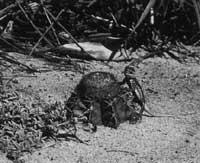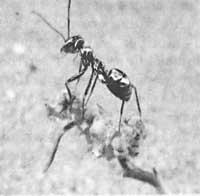Guardian of the live exchange
1993/09/01 Elhuyar Zientzia Iturria: Elhuyar aldizkaria
In the sandy deserts of the Brazilian coast, the lizards and cactus have invented a form of exchange that benefits both, that is, the cactus provides food and water to the lizard, which disperses the seeds of cactus in the desert.

Joao Vasconcellos Neto of the University of Campinas and his coworkers analyzed the sugandil lizard Tropidurus torquatus that lives in the shelter of Linhares, north of Rio de Janeiro. In this shelter the temperature reaches 50ºC during the day. Sugandila feeds on ants and places the observatory on the cactus violaceus that lives in the deserts to hunt.
Each day the cactus produces one, two, three or four small pink fruits. The fruit at the top of the cactus leaves in the morning next to the one that begins to work. As the temperature increases throughout the day, the fruit grows more and more rapidly and thus remains in view of the lizards.
The lizard climbs to the cactus seeing the fruit and takes the fruit. The lizard, after eating the fruit, disperses the excrements and their seeds through the desert. Each fruit has had an average of 22 seeds, and to grow “some chemical components are needed present in the stomach of the lizards”, explains Vasconcellos-Neto.

Gai honi buruzko eduki gehiago
Elhuyarrek garatutako teknologia





